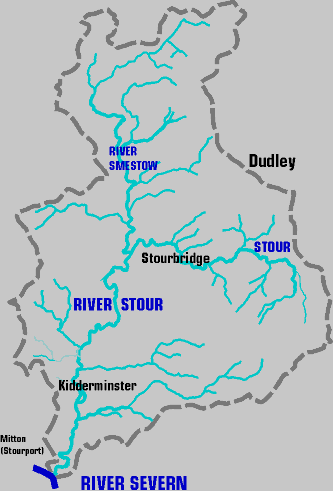| |
During the reign of Charles the 1st the
river "Stour" became one of the hardest-worked rivers
in the kingdom, providing power for blast furnaces, tilt hammers,
and slitting mills located along its length. "Nash’s History
of Worcestershire" 2nd Edition 1799. (Many of these
were the property of the Foley family).
In the reign of Charles the 2nd an act of parliament was passed
for making the river navigable, Andrew Yarranton claimed to have
completed this in 1665 between Stourbridge and the River Severn.
(He had previously built Roman locks on Dick Brook to connect
his Astley Furnace with the Severn).
Rising behind St Kenelms church, on the edge of the Clent hills,
the slow trickling stream soon becomes a babbling brook, and within
2 miles becomes the "River Stour" mentioned in Andrew
Yarranton’s book "England’s Improvement by Land and Sea"
London 1677.
This same river powered Dud Dudley’s Cradley forge where he claimed
to have perfected the use of ‘pit coal’ for the smelting of Iron,
in his book "Metallum
Martis" published in 1665.
The Foley’s Iron Empire in the 17th & 18th centuries comprised
of many furnaces, forges and slitting mills many of which were
on the River Stour,
Today many parts of the river and its tributaries are surrounded
by houses and factories, but the pockets of rural landscape convey
some impression of how the valley might have looked 200-300 years
ago.
Photo Index
|



![]() This series of photographs is a personal interpretation
of the way a river is perceived in our post-industrial landscape. It no longer
has any economic importance, no industries depend on it, and instead it must
be tamed and controlled – for flood defence.
This series of photographs is a personal interpretation
of the way a river is perceived in our post-industrial landscape. It no longer
has any economic importance, no industries depend on it, and instead it must
be tamed and controlled – for flood defence.